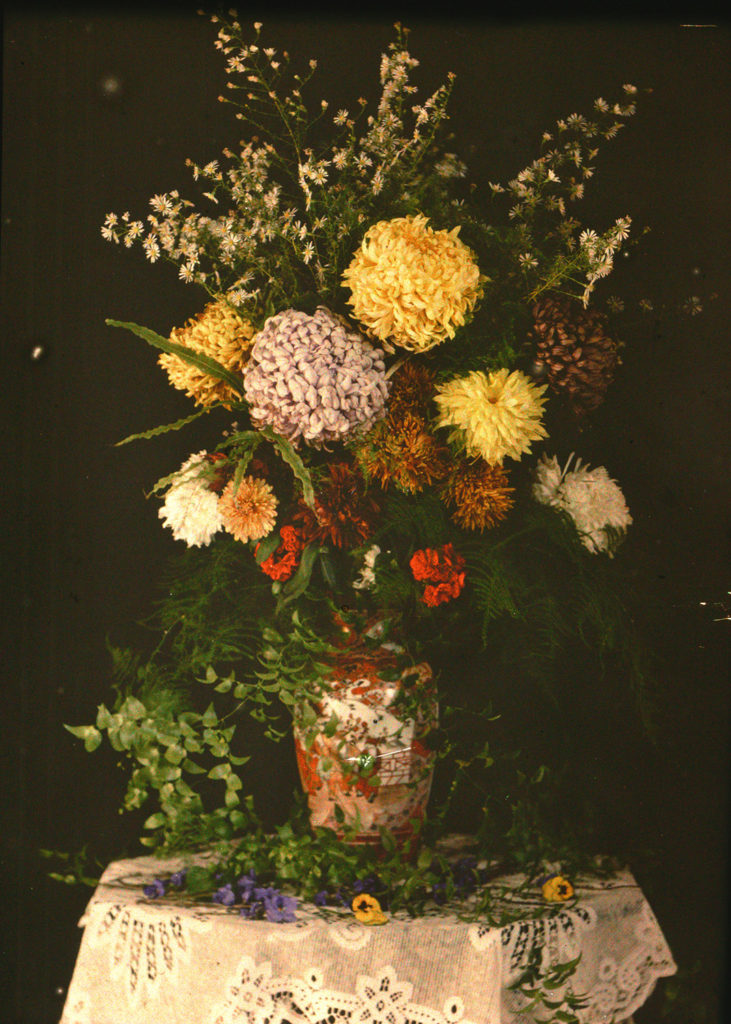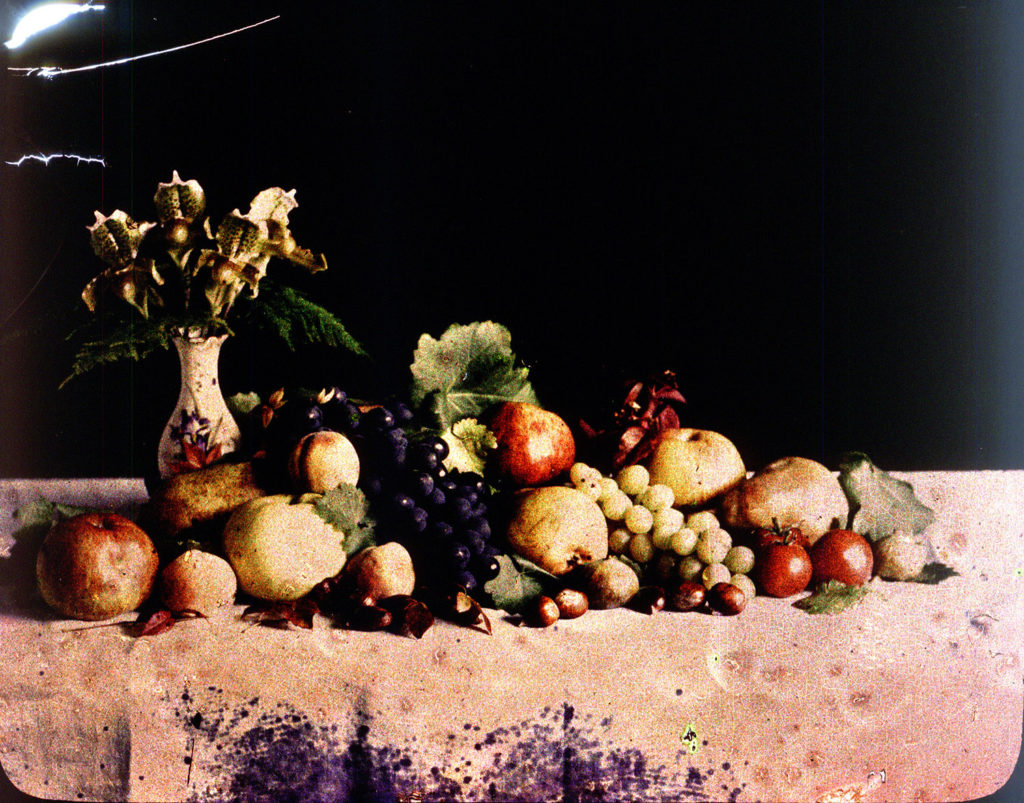The autochrome process was invented in France by brothers Auguste and Louis Lumière. The Lumières began a commercial manufacture of autochrome plates in the early 20th century.
Autochrome plates are covered in microscopic red, green an blue coloured potato starch grains. When the photograph is taken, light passes through these colour filters to the photographic emulsion. The plate is processed to produce a positive transparency. Light, passing through the coloured starch grains, combines to recreate a full colour image of the original subject.
Autochrome plates were manufactured at the Lumière factory in Lyon and was a complex industrial process. The transparent starch grains were passed through many sieves to isolate grains. These gains were separated into batches, dyed red, green and violet, mixed together and spread over a glass plate. Next charcoal powder was spread over the plate to fill any gaps between the coloured starch grains. A roller spread the grains and flattened them out. Finally, the plate was coated with a panchromatic photographic emulsion.
Lumière Autochrome is the first colour photograph taken in Jersey in 1904 G. Guiton & E. Guiton. This photograph of a vase containing roughly assembled garden flowers was the starting point for photographers to explore the possibilities of colour.

Emile’s autochromes fall into two categories. The first category are still life photographs such as flowers, stained glass windows, fruit. The second category can be described as domestic photographs such as children playing, a garden, local country scenes.
The still life photographs are an attempt to experiment with the autochrome process, to improve his technical understanding and the quality of his images. Guiton was also making attempts at classical arrangements and compositions.

https://blog.scienceandmediamuseum.org.uk/autochromes-the-dawn-of-colour-photography/
